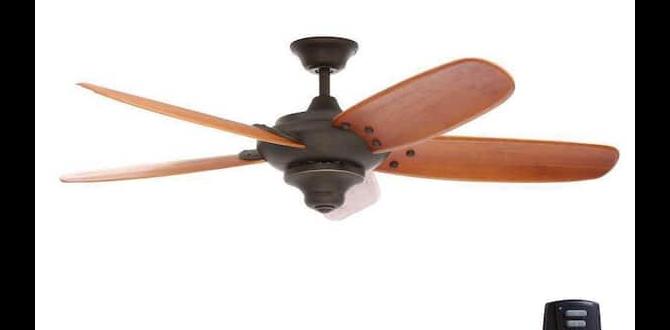Nailer slow fire issue fix: The most common causes are low air pressure, a dirty or faulty exhaust port, or an issue with the internal trigger mechanism. We’ll guide you through simple, proven solutions to get your nailer firing fast and efficiently again.
Hitting a nail with your nailer should be a quick, satisfying thwack. But sometimes, you get a weak, sputtering pfthwack, or worse, no nail at all followed by a slow release of air. This “nailer slow fire issue” is frustrating, especially when you’re in the middle of a project. Don’t worry, it’s usually a fixable problem! As your guide at Nailerguy, I’ve seen this pop up countless times. We’ll break down why it happens and give you simple, step-by-step solutions to get your nailer back in action. Let’s get your tool working like new!
Table of Contents
Why Is My Nailer Firing Slowly? Common Culprits
It’s easy to feel defeated when your trusty nailer starts taking its sweet time. But understanding why it’s happening is the first step to fixing it. Most slow-fire issues boil down to a few key areas: air supply, the tool’s exhaust, or the internal parts.
1. Insufficient Air Pressure
This is the number one reason for a slow-firing nailer. Nailers need a specific amount of air pressure to drive a nail home with force and speed. If the pressure is too low, the piston and firing pin won’t have enough oomph to do their job.
2. Clogged or Obstructed Exhaust Port
Every time your nailer fires, it releases air through an exhaust port. This port can get clogged with debris, dust, or even oil. When this happens, the air doesn’t escape freely, which can slow down the nailer’s cycle time and affect its power.
3. Dirty Internal Components
Nailers have several moving parts inside, including O-rings, pistons, and springs. Over time, these can get dirty, worn, or gummed up with old lubricant. This friction and gunk can impede movement, leading to a sluggish performance.
4. Low Air Volume (CFM) from Compressor
Even if your compressor’s pressure gauge shows the right PSI, it might not be delivering enough volume of air (measured in Cubic Feet per Minute or CFM). Nailers, especially framing nailers, consume a lot of air quickly. If your compressor can’t keep up, you’ll experience slow firing.
5. Leaks in the Air Hose or Fittings
Air leaks are like tiny leaks in your budget – they’re hard to find but steal away precious resources. A leak anywhere between the compressor and the nailer means less air is reaching the tool, directly impacting its cycling speed and power.
6. Faulty O-Rings or Seals
Inside your nailer, rubber O-rings and seals keep air contained where it needs to be. If these become cracked, brittle, or worn, air will escape internally, reducing the pressure that drives the nail and causing that frustrating slow fire.
7. Issues with the Trigger Mechanism
The trigger is what initiates the firing sequence. If the trigger valve is dirty, sticky, or damaged, it might not open and close properly, delaying or weakening the air flow to the firing mechanism.
The Proven Solution: Step-by-Step Fixes for Nailer Slow Fire
Let’s get your nailer firing like it’s brand new! We’ll work through these steps from the easiest to the most involved. Always make sure your air compressor is turned off and disconnected before you start any maintenance on your nailer. Safety first!
Step 1: Check and Adjust Air Pressure (The Easiest Fix!)
This is the most common fix, so let’s start here. Most nailers have a recommended operating pressure range. You can usually find this in your nailer’s manual, or sometimes it’s printed on the tool itself.
- Turn off your air compressor and disconnect it.
- Connect your nailer to the air hose and compressor.
- Turn on the compressor.
- Locate the regulator on your compressor or inline regulator (if you have one). Adjust the dial to set the pressure.
- Refer to your nailer’s manual for the correct PSI. For many finishing and brad nailers, 70-90 PSI is common. Framing or roofing nailers might need higher, like 90-120 PSI.
- Test fire the nailer into a scrap piece of wood.
If your nailer now fires strongly, congratulations! You found the issue. If it’s still slow, move on to the next step.
Step 2: Inspect the Exhaust Port
The exhaust port is where air escapes after firing. If it’s blocked, air gets trapped and slows things down.
- Turn off and disconnect the air compressor.
- Locate the exhaust port on your nailer. It’s usually a small opening near the top or side.
- Visually inspect the port for any visible debris, sawdust, or gunk.
- Use a can of compressed air (or your compressor’s blow gun attachment) to blow out any loose debris from the port. Hold the can/gun at an angle to really flush it.
- For stubborn buildup, you might carefully use a small, non-metallic pick (like a plastic tooth-pick or a thin wooden skewer) to dislodge anything stuck, being careful not to scratch the metal.
- Re-connect the air source and test the nailer.
Step 3: Check for Air Leaks
A leaky air system means less air is getting to your nailer. It’s like trying to drink through a straw with a hole in it – you won’t get enough fluid!
What you’ll need:
- Soapy water solution (dish soap and water in a spray bottle)
- Air compressor turned on and pressurized
How to check:
- Turn on your air compressor and pressurize your system to your typical working pressure.
- Disconnect the nailer from the hose.
- Spray the soapy water solution generously on all parts of the air hose, from end to end.
- Pay close attention to the quick-connect fittings on both ends of the hose and the coupler where the nailer connects.
- Look for bubbles forming – this indicates an air leak.
- If you find a leak:
- Tighten fittings.
- If the fitting itself is suspect, consider replacing it. They are inexpensive.
- If the hose has a leak in the middle, it’s best to replace the entire hose. It’s not worth the risk of a dangerous failure. You can find durable hoses at most hardware stores or online retailers. For example, this DEWALT Rubber Air Hose is a popular choice for its durability.
- Once leaks are fixed, reconnect the nailer and test.
Step 4: Lubricate Your Nailer (If Applicable)
Many pneumatic nailers require regular lubrication to keep their internal parts moving smoothly. This is especially true for less expensive models or those that get heavy use. Check if your nailer requires oil. Some high-end models are “oil-free” and don’t need this step.
What you’ll need:
- Slightly thicker turbine oil or specialized pneumatic tool oil (NOT WD-40 or general lubricants). Look for oil like Campbell Hausfeld PA120000AJ Pneumatic Lubricant.
- A clean cloth
How to lubricate:
- Turn off and disconnect the air compressor.
- Locate the oil port on your nailer. It’s usually a small cap or plug on the body of the tool.
- Remove the cap/plug according to your nailer’s manual.
- Add a few drops of oil into the port. The exact amount will be in your manual, but typically 2-5 drops are sufficient for most models. Over-oiling can cause issues too!
- Replace the cap/plug securely.
- Reconnect air (compressor OFF for now) and fire the nailer several times into a scrap piece of wood without nails. This helps distribute the oil internally throughout the mechanism. You’ll see a puff of oily air from the exhaust.
- Turn on the compressor and test fire with nails.
Important Note: Some compressor oils can degrade the O-rings and seals in your nailer. Always use dedicated pneumatic tool oil.
Step 5: Clean the Internal Bypass/Bypass Valve
This is a bit more involved but often solves persistent slow-fire issues. Some nailers have a bypass valve or a mechanism that helps control air flow. If this gets gummed up, it can restrict air.
This process varies significantly by nailer model. It’s crucial to consult your specific nailer’s manual for disassembly and cleaning instructions. Referencing online videos for your nailer model can also be incredibly helpful.
Generally, it involves:
- Disconnecting air supply.
- Removing the magazine (where the nails are loaded).
- Removing safety glasses or nose piece to access internal parts.
- Carefully disassembling the handle or top area where the bypass valve or related components are housed.
- Cleaning any visible debris from these parts, often with a soft cloth and maybe a very small amount of isopropyl alcohol for stubborn grime.
- Reassembling carefully**, ensuring all parts are in their correct place.
- Testing the nailer.
If you are not comfortable with minor disassembly, this is a good time to consider professional repair or consulting a trusted tool service center.
Step 6: Check the O-Rings and Seals
Worn or damaged O-rings and seals inside the nailer can cause air to leak, reducing power and speed. This is a common issue for older tools or those that have been heavily used.
What you’ll need:
- Your nailer’s manual or a repair manual specific to your model
- A small set of precision screwdrivers or hex keys
- Replacement O-ring and seal kit for your specific nailer model (you can usually find these online or from the manufacturer)
- A small amount of O-ring lubricant (silicone-based)
- A clean cloth
How to replace O-rings:
- Disconnect air supply and completely depressurize the tool.
- Disassemble the nailer carefully, following your manual’s instructions. This might involve removing the magazine, handle, and internal components.
- Identify the O-rings and seals. Look for any that are cracked, flattened, brittle, or show signs of wear.
- Remove the old O-rings and seals. Be gentle so you don’t scratch the metal surfaces they seal against.
- Lightly lubricate the new O-rings and seals with O-ring lubricant. This helps them seat properly and prevents damage during installation.
- Install the new O-rings and seals into their correct positions according to the manual.
- Reassemble the nailer carefully, step-by-step, making sure all screws and parts are back in place.
- Reconnect air and test fire.
It’s often worth replacing the full seal kit if your nailer is older. Here’s a handy guide for basic nailer maintenance that can give you an idea of common wear points, although it may not cover every specific model: Family Handyman: Nail Gun Maintenance.
Step 7: Consider the Internal Spring or Piston
If you’ve gone through all the other steps and your nailer is still slow, there might be an issue with the main firing spring or the piston itself. The spring could be weakened or broken, and the piston might be bent or damaged.
This is usually a more advanced repair. If you find damage to the spring or piston during the O-ring replacement, or if you suspect these are the issue without disassembly, it might be time to:
- Consult a professional repair shop.
- Consider replacing the nailer. For many DIYers, the cost and time for this level of repair might outweigh buying a new, reliable tool, especially if the old one is several years old.
Troubleshooting Table: Nailer Slow Fire Issues
Here’s a quick reference guide to help you pinpoint the problem:
| Symptom | Likely Cause | Primary Fix | Secondary Fix |
|---|---|---|---|
| Nails not fully driven, weak firing sound. | Low Air Pressure (PSI) | Increase compressor output pressure. | Check for air leaks in hose/fittings. |
| Nailer fires, but slowly, with a “hissing” after each shot. | Air Leak (internal or external) | Inspect and repair/replace hose, fittings, or internal seals/O-rings. | Ensure exhaust port is clear. |
| Nailer fires weakly, especially after extended use. | Dirty Internal Components or Low Lubrication (if applicable) | Lubricate tool (if oil-lubricated model). Clean internal bypass if necessary. | Check O-rings for wear. |
| Nailer fires erratically, sometimes strong, sometimes weak. | Intermittent Air Leak or Trigger Valve Issue | Check all fittings and hose connections. Clean trigger mechanism. | Inspect O-rings. |
| Tool seems to “bog down” and won’t consistently cycle. | Low Air Volume (CFM) from Compressor, or Clogged Exhaust | Ensure compressor meets tool’s CFM requirement. Clean exhaust port thoroughly. | Check air filter on compressor is clean. |
Nailer Maintenance for Optimal Performance
Preventing a slow-fire issue is always better than fixing one! A few minutes of regular maintenance can keep your nailer running smoothly for years.
Regular Cleaning:
- Wipe down your nailer after each use to remove dust and debris.
- Pay special attention to cleaning around the nose and magazine.
- Periodically blow out the exhaust port with compressed air.
Proper Lubrication (If Applicable):
- Follow the manufacturer’s recommended lubrication schedule.
- Use only specialized pneumatic tool oil.
Air System Care:
- Drain your air compressor tank regularly to remove moisture. Water in the air system can cause rust and damage internal nailer components.
- Check and clean your compressor’s air filter as recommended.
- Inspect air hoses and fittings for wear or damage before each use.
Safe Storage:
- Store


